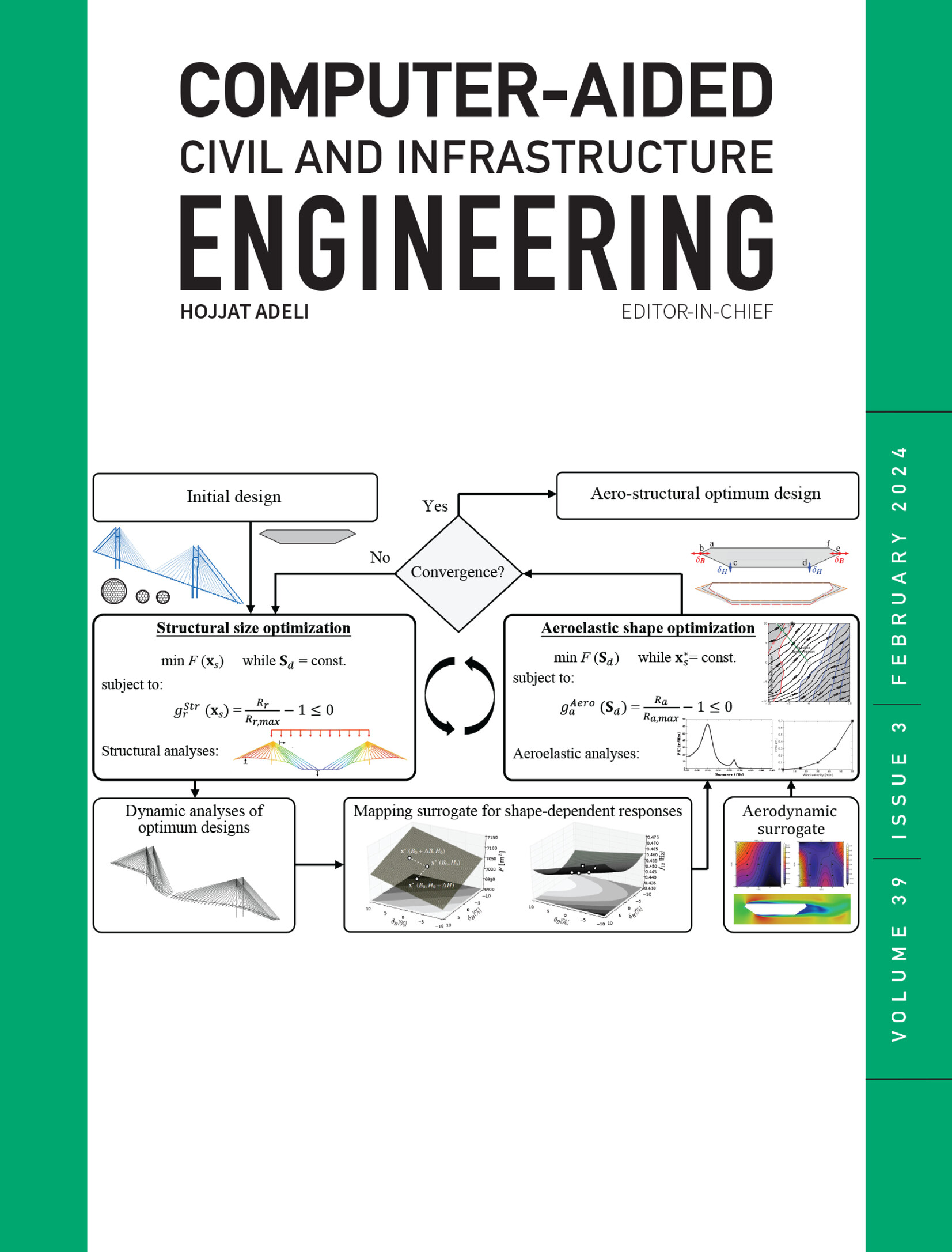用于在建筑信息模型中嵌入语义、空间和拓扑数据的预训练图神经网络
IF 9.1
1区 工程技术
Q1 COMPUTER SCIENCE, INTERDISCIPLINARY APPLICATIONS
引用次数: 0
摘要
大型基础模型在土木工程中具有显著的优势,但它们主要关注文本和视觉数据,忽略了建筑信息建模(BIM)模型中丰富的语义、空间和拓扑特征。因此,本研究开发了第一个大规模图形神经网络BIGNet,以学习和重用嵌入在BIM模型中的多维设计特征。首先,引入可扩展的图表示来编码BIM组件的“语义-空间-拓扑”特征,并创建了一个具有近100万个节点和350万条边的数据集。随后,通过在GraphMAE2中引入新的消息传递机制并进一步使用节点屏蔽策略进行预训练,提出了BIGNet。最后,在基于BIM的设计检查的各种迁移学习任务中对BIGNet进行了评估。结果表明:(1)同构图表示在学习设计特征方面优于异构图,(2)考虑30 cm半径范围内的局部空间关系提高了性能,(3)基于图注意网络的特征提取的BIGNet迁移学习效果最好。与未预训练模型相比,这一创新使平均F1得分提高了72.7%,证明了其在学习和转移BIM设计特征方面的有效性,并促进了它们在未来设计和生命周期管理中的自动化应用。本文章由计算机程序翻译,如有差异,请以英文原文为准。
Pretrained graph neural network for embedding semantic, spatial, and topological data in building information models
Large foundation models have demonstrated significant advantages in civil engineering, but they primarily focus on textual and visual data, overlooking the rich semantic, spatial, and topological features in building information modeling (BIM) models. Therefore, this study develops the first large‐scale graph neural network, BIGNet, to learn and reuse multidimensional design features embedded in BIM models. First, a scalable graph representation is introduced to encode the “semantic‐spatial‐topological” features of BIM components, and a dataset with nearly 1 million nodes and 3.5 million edges is created. Subsequently, BIGNet is proposed by introducing a new message‐passing mechanism to GraphMAE2 and further pretrained with a node masking strategy. Finally, BIGNet is evaluated in various transfer learning tasks for BIM‐based design checking. Results show that: (1) homogeneous graph representation outperforms heterogeneous graph in learning design features, (2) considering local spatial relationships in a 30 cm radius enhances performance, and (3) BIGNet with graph attention network‐based feature extraction achieves the best transfer learning results. This innovation leads to a 72.7% improvement in average F1‐score over non‐pretrained models, demonstrating its effectiveness in learning and transferring BIM design features and facilitating their automated application in future design and lifecycle management.
求助全文
通过发布文献求助,成功后即可免费获取论文全文。
去求助
来源期刊
CiteScore
17.60
自引率
19.80%
发文量
146
审稿时长
1 months
期刊介绍:
Computer-Aided Civil and Infrastructure Engineering stands as a scholarly, peer-reviewed archival journal, serving as a vital link between advancements in computer technology and civil and infrastructure engineering. The journal serves as a distinctive platform for the publication of original articles, spotlighting novel computational techniques and inventive applications of computers. Specifically, it concentrates on recent progress in computer and information technologies, fostering the development and application of emerging computing paradigms.
Encompassing a broad scope, the journal addresses bridge, construction, environmental, highway, geotechnical, structural, transportation, and water resources engineering. It extends its reach to the management of infrastructure systems, covering domains such as highways, bridges, pavements, airports, and utilities. The journal delves into areas like artificial intelligence, cognitive modeling, concurrent engineering, database management, distributed computing, evolutionary computing, fuzzy logic, genetic algorithms, geometric modeling, internet-based technologies, knowledge discovery and engineering, machine learning, mobile computing, multimedia technologies, networking, neural network computing, optimization and search, parallel processing, robotics, smart structures, software engineering, virtual reality, and visualization techniques.

 求助内容:
求助内容: 应助结果提醒方式:
应助结果提醒方式:


